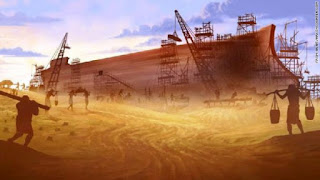Skip to main content
Possible Marking for the Global Flood — Part 1
The K-T boundary is a thin layer in the geologic column marking the transition from the Cretaceous system of rocks to the Paleogene system. The Cretaceous was the last period of the Mesozoic era, and is traditionally abbreviated as "K". The Paleogene is the first period of the Cenozoic era, and the deprecated term tertiary ("T") refers to the the combination of the Paleogene and Neogene periods. The popular view is that this boundary was caused by the impact of a large asteroid 65.5 ± 0.3 million years ago, which also led to the extinction of the dinosaurs, although a number of mainstream geologists have questioned both points. [1]
Biblical creation scientists do what other scientists do: Propose ideas and models, then see if the evidence supports them. One proposal is to determine if the "K/T boundary" could have been deposited during the Global Flood of Noah's time.
Like many other forensic uncertainties, the location of the Flood/post-Flood boundary should be subject to the principle of multiple working hypotheses. There is no doubt that it is an important question and stratigraphic locations abound. One of the most popular locations is the K/T boundary. Evidence has been presented to support that choice, one of which is a change from worldwide/continental to local/regional sedimentation. However, a close analysis of this evidence suggests that it raises more questions than it answers, supporting the idea that the end of the Flood corresponds to the Late Cenozoic.
Read the rest of "Is the K/T the Post-Flood boundary? — part 1: introduction and the scale of sedimentary rocks", here.
